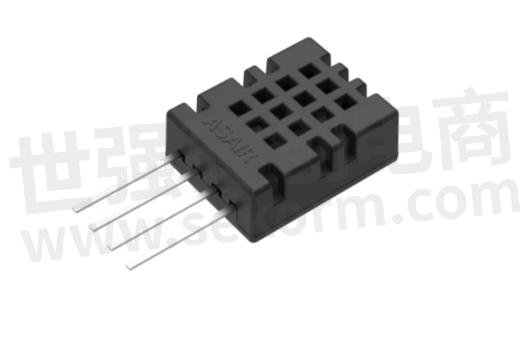Introduction to Temperature and Humidity Sensor

Since temperature and humidity are closely related to physical quantities and actual people's lives, a sensor integrating temperature and humidity will be produced accordingly. Temperature and Humidity Sensor refers to a device or device that can convert temperature and humidity into electrical signals that can be easily measured and processed. ASAIR Electronics' temperature and humidity sensors generally measure temperature and relative humidity.

Digital signal temperature and humidity sensors are mainly divided into two programs: 1-wire and I²C.
Temperature: A physical quantity that measures the cold and heat of an object. It is one of the seven fundamental physical quantities in the International System of Units. In production and scientific research, many physical phenomena and chemical processes are carried out at a specific temperature, and people's lives are closely related to him.
Humidity: Humidity was closely related to living a long time ago, but it is difficult to express it by quantity.
The most commonly used physical quantity to express humility in daily life is the relative humidity of the air. Expressed by %RH. The relative humidity is closely related to temperature in the derivation of physical quantities. For a specific volume of airtight gas, the higher the temperature, the lower the relative humidity, and the lower the temperature, the higher the relative humidity. Which involves complex thermal engineering knowledge.
Some definitions of humidity:
Relative humidity: In the measurement law, humidity is defined as the "quantity of the object's state." The humidity referred to in daily life is relative humidity, expressed in RH%. In short, that is, the percentage of saturated water vapor (saturated water vapor pressure) in the gas (usually in the air) when the amount of water vapor (water vapor pressure) is the same as that of the air.
Absolute humidity: refers to the amount of water vapor contained in a unit volume of air, generally in grams. The temperature has a direct effect on absolute humidity. Generally, the higher the temperature, the more water vapor is emitted, and the greater the absolute humidity; on the contrary, the lower the humidity.
Saturated humidity: The maximum amount of water vapor that can be contained in the air per unit volume at a specific temperature. If it exceeds this limit, the excess water vapor will condense and become water droplets, and the air humidity at this time will become saturated humidity. The saturated humidity of the air is not fixed. It changes with the change of temperature. The higher the temperature, the more water vapor can be contained in the unit volume of air, and the greater the saturated humidity.
Dew point: refers to the air containing a certain amount of water vapor (absolute humidity). When the temperature drops to a certain level, the water vapor contained in it will reach a saturated state (saturated humidity) and begin to liquefy into the water, this phenomenon is called condensation. The temperature at which water vapor begins to liquefy into water is called "dew point temperature" or "dew point," for short. If the temperature continues to drop below the dew point, the super-saturated water vapor in the air will condense into water droplets on the object's surface. In addition, the wind is closely related to the temperature and humidity in the air, and it is also one of the critical factors affecting the changes in air temperature and humidity.
- +1 Like
- Add to Favorites
Recommend
This document is provided by Sekorm Platform for VIP exclusive service. The copyright is owned by Sekorm. Without authorization, any medias, websites or individual are not allowed to reprint. When authorizing the reprint, the link of www.sekorm.com must be indicated.

































































































































































































































































































































































































































































































































































































































































































































































































































































































































